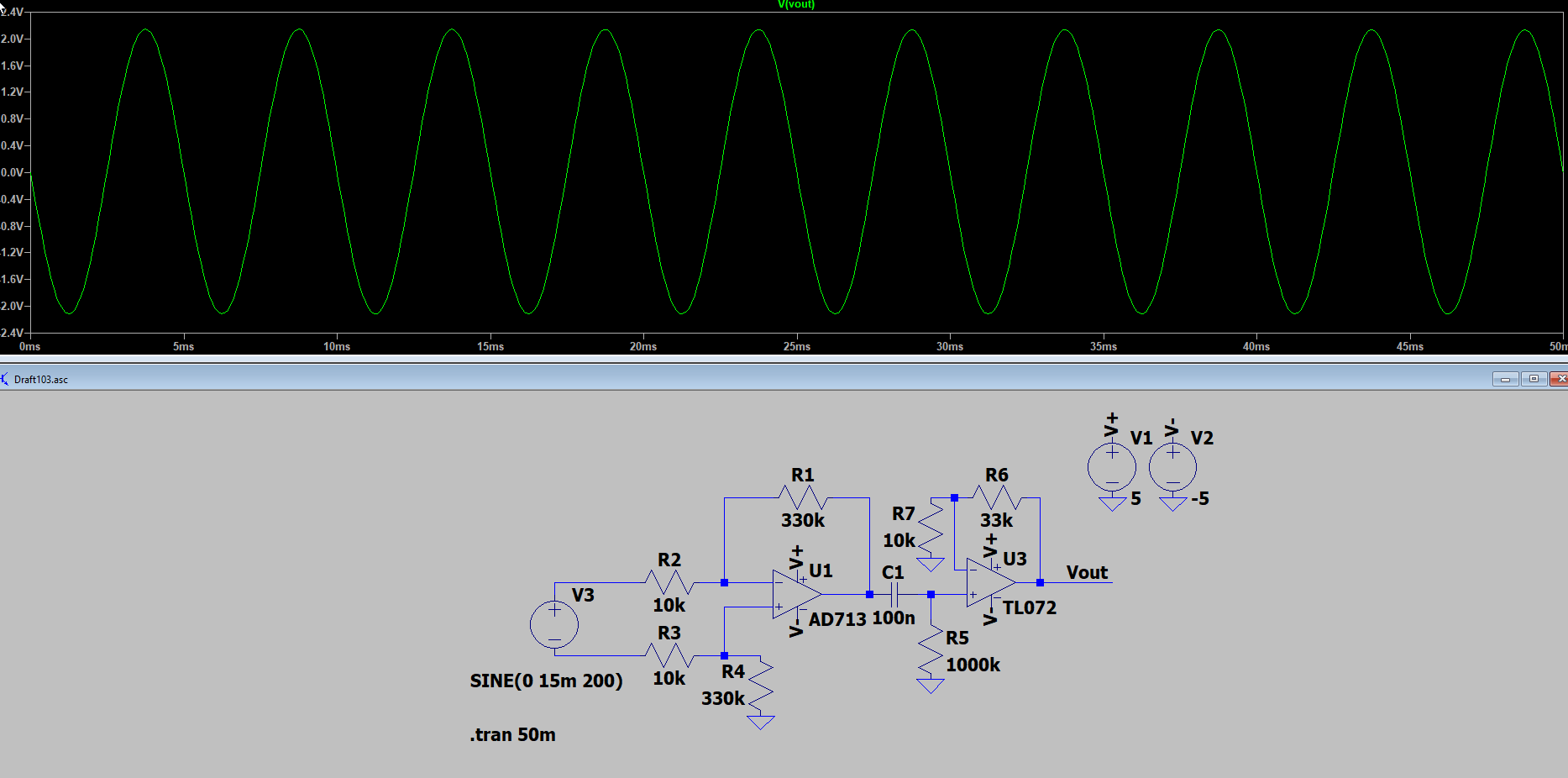I am trying to simulate a thermocouple amplifying circuit for a project, and for some reason, my output keeps producing a square wave, rather than a sinusoidal wave.
I found this diagram online on a published paper, and the group of people stated they used this circuit to amplify a signal, by reading a change in voltage through a thermocouple junction wire.
I am curious if this circuit is in fact not able to produce the amplified signal? Is it because the first op-amp is a "non-inverting amplifier" and the second is an "inverting amplifier", xo it's canceling the output signal?
Or am I simulating this circuit incorrectly? Do I need a variable DC source rather than a function generator? Variable resistors? Is R2 not supposed to be grounded? Is my V+ and V- power too low at 5 V?
I've tried a lot of these options and it's still producing a square wave. Please let me know, any advice is helpful.







